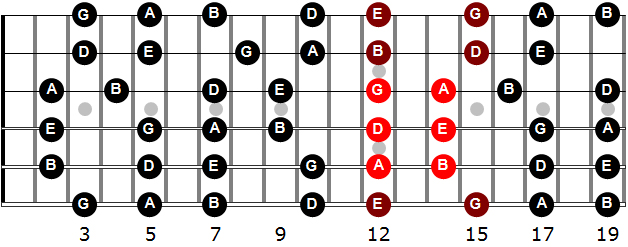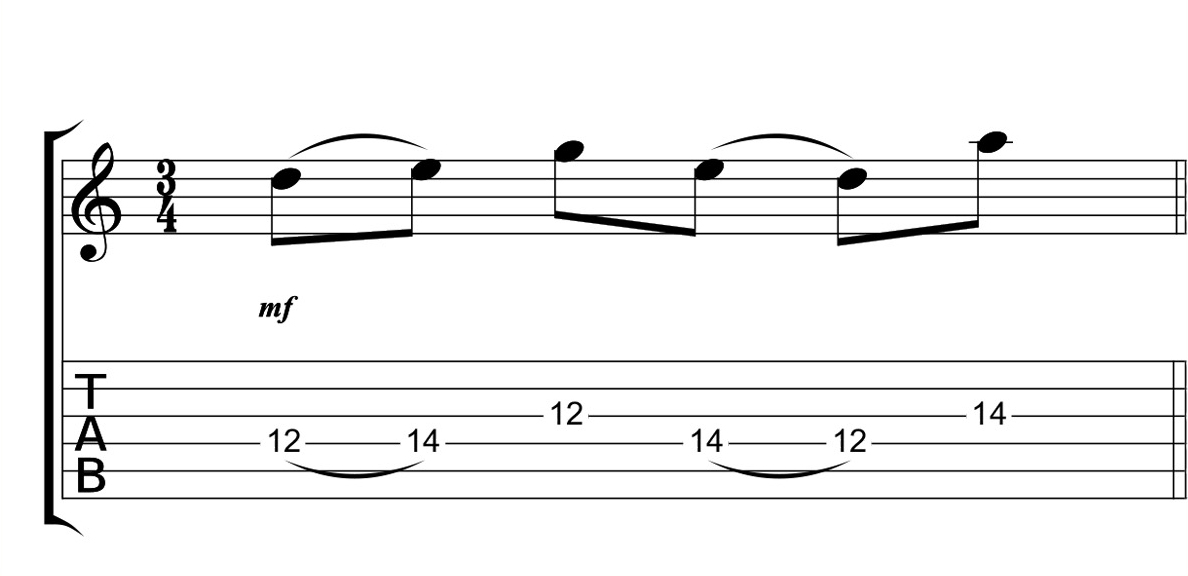Video Lesson: My number one favourite pentatonic shape of all time
Best of 2019: These easy-to-learn 'two notes per string' patterns can open up any number of musical options when soloing
Best of 2019: We can't practise everything. There are so many techniques, licks, sequences and ideas out there that to practise them all would take several life times.
-----------------------------------------------------
This exclusive MusicRadar video lesson is brought to you in association with our friends at Guitarmastery.net. Check out their site for more lessons and courses.
-----------------------------------------------------
But in that huge pool of exciting material we can practise, there are a few things what will do more for our overall skill level than most.
If you can find the vital and most effective things to practise, you can make more progress than anyone around you – and the sequence I am going to show you today will make that very obvious.
It's not just a really cool sequence that you can use to play fast and slow lines; it's also so simple that its impossible to hear in your playing. It isn't significant in any other way than its enormous effectiveness.
This is the one that will give you the biggest bang for you buck, the most from your practising and the greatest joy when you improvise and play
Claus Levin Sepstrup
Furthermore this a tool for improvising – it is flexible and can be played in so many ways as I will show you in the video.
Of all the sequences you could be practising within the 'two notes per string' (2nps) pentatonic scale format, this is the one to focus on and master. This is the one that will give you the biggest bang for you buck, the most from your practising and the greatest joy when you improvise and play.
Want all the hottest music and gear news, reviews, deals, features and more, direct to your inbox? Sign up here.

You can play this sequence in any position on any strings but for this lesson I have chosen to use the first position minor pentatonic shape – and the A, D and G strings [highlighted in the diagram above] because we have a nice whole tone area to work with in that exact spot.
As I wrote earlier, this sequence is flexible even though it's almost the same few movements performed by your fingers each time.
Practise each example by itself. Use a metronome to keep your timing and when you can easily play the sequence without thinking too much about it and at a low level of speed, you can start practising while doing other things, like watching more videos or reading articles on MusicRadar.
Example 1

Example 2

Example 3

Example 4

Example 5

Now it's time to watch the video and to your first steps towards mastering this essential core sequence.
- Check out the previous lessons in this series:
The magic of the pentatonic double-note shape, Super-easy ways to use advanced scale shapes to spice up your playing.
MusicRadar is the number one website for music-makers of all kinds, be they guitarists, drummers, keyboard players, DJs or producers...
- GEAR: We help musicians find the best gear with top-ranking gear round-ups and high-quality, authoritative reviews by a wide team of highly experienced experts.
- TIPS: We also provide tuition, from bite-sized tips to advanced work-outs and guidance from recognised musicians and stars.
- STARS: We talk to musicians and stars about their creative processes, and the nuts and bolts of their gear and technique. We give fans an insight into the craft of music-making that no other music website can.
